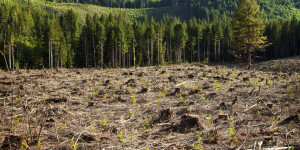
It’s no secret that people are generous. They give their time, talent and treasure to support a wide range of philanthropic efforts. But in many cases NGOs are not achieving the speed and scale necessary to address the key issues of our time. Just like in business, pilots are often created but private and public sector organizations often struggle to go beyond the pilot stage as reported by John Friedman.
Today some NGOs are asking if they can create a new model, based on the success of venture capital, which drives innovations to scale? And what would that look like?
Some businesses and NGOs set goals, define strategies and tactics and measure their success against those implementation targets rather than the desired results or outcomes. But venture capitalists focus on “the freedom to succeed.” They define and agree on desired results but allow some flexibility on strategy and how those goals are to be achieved.
By setting milestones for outcomes, they shift thinking from the processes, practices or tools to whether or not achieving the desired results is happening at scale.
Earlier this year World Wildlife Fund (WWF) launched a new effort, the Markets Institute. This is a new platform that convenes stakeholders from across the food sector to explore market-based, results-oriented strategies to “optimize global food sector sustainability.” This ‘freedom to succeed,’ informs the model of the Institute.
Sounding like an entrepreneur, Jason Clay, Ph.D, Executive Director, of WWF’s Markets Institute explains; “you should pursue multiple strategies in the first year; then double-down on what works, abandon what doesn’t, and come up with new ideas.”
As an example he talks about the issue of deforestation which, despite decades of awareness, activism and efforts remains an ongoing problem around the world. Clay looks at it from a Venture Capital (VC) perspective. As the originator of ‘rainforest marketing’ in the late 1980s, he wanted to prove that the value of forests when generating income from the sale of Brazil nuts and other forest products was higher than from the same land converted to pasture. In fact, as a source of Brazil nuts, an acre of forest generates six times more income than an acre of pasture.
According to Clay, this effort which would have been considered a success because it generated more income and preserved forests actually “failed because it didn’t transform the larger paradigm of converting forests to pasture which still dominates thinking 25 years later.”
Today, some banks are starting to put environmental, social and governance criteria on their loans. And they are also looking for those ‘strategic intervention points’ where the actions of one person – or one company – saying/doing something causes a cascade, such as the cocoa traders offering a single place or way to reach a larger group of producers. If one identifies those places in the value chain, it offers a greater potential for change rather than individual entities. To read more click here.




